Engelmann Spruce, Picea engelmannii
A wall of forest looms above
And sweetly the blackbird sings
All the birds make melody
Over me and my books and things…
–Priscian
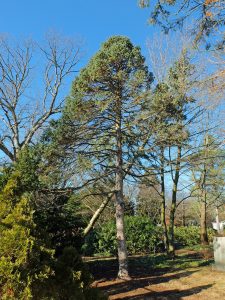 In the past we have discussed plants which commemorate Benjamin Franklin (1706-1790), Cherokee Chief Sequoia (c.1770-1844), Pierre Magnol (1638-1715), Peter Kalm (1715-1779), Dr. Joseph Fothergill (1712-1780), and Father Armand David (1826-1900) to mention but a few “mysteries of the gardens.” Each of these and many others have had their names immortalized, in Latinized form, allowing us and garden aficionados to pursue the playful activity of “who does your garden grow.”
In the past we have discussed plants which commemorate Benjamin Franklin (1706-1790), Cherokee Chief Sequoia (c.1770-1844), Pierre Magnol (1638-1715), Peter Kalm (1715-1779), Dr. Joseph Fothergill (1712-1780), and Father Armand David (1826-1900) to mention but a few “mysteries of the gardens.” Each of these and many others have had their names immortalized, in Latinized form, allowing us and garden aficionados to pursue the playful activity of “who does your garden grow.”
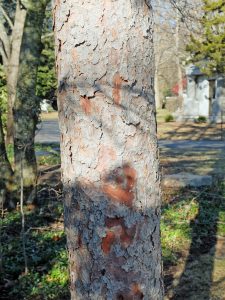 We will continue this tangent with the Engelmann Spruce, Picea engelmannii. Barely remembered today, George Engelmann’s (1809-1884) contributions to botany were enormous. This German physician immigrated to Illinois in 1832, he re-settled in St. Louis in 1835, where he maintained his active medical practice until the end of his life. In addition to his successful medical practice he excelled in field collection of botanical specimens. Initially sending Western specimens to European botanists, he later began providing specimens and technical descriptions to Asa Gray (1810-1888) and John Torrey (1796-1873), to assist with their effort to create the early portion of The Flora of North America. This continued and he became a major conduit between other Western field collectors to Gray and Torrey. Engelmann and Gray maintained botanical correspondence for four decades.
We will continue this tangent with the Engelmann Spruce, Picea engelmannii. Barely remembered today, George Engelmann’s (1809-1884) contributions to botany were enormous. This German physician immigrated to Illinois in 1832, he re-settled in St. Louis in 1835, where he maintained his active medical practice until the end of his life. In addition to his successful medical practice he excelled in field collection of botanical specimens. Initially sending Western specimens to European botanists, he later began providing specimens and technical descriptions to Asa Gray (1810-1888) and John Torrey (1796-1873), to assist with their effort to create the early portion of The Flora of North America. This continued and he became a major conduit between other Western field collectors to Gray and Torrey. Engelmann and Gray maintained botanical correspondence for four decades.
 In St. Louis, Engelmann also encouraged and advised Henry Shaw (1800-1889), successful businessman, philanthropist, with the creation of the Missouri Botanic Garden. Engelmann persuaded Shaw to include an herbarium and library to be involved with botanical/scientific research, in addition to creating the public open-space. Today it is one of the top botanical gardens in the world, whose herbarium numbers 6.5 million specimens (98,000 from Engelmann’s private collection).
In St. Louis, Engelmann also encouraged and advised Henry Shaw (1800-1889), successful businessman, philanthropist, with the creation of the Missouri Botanic Garden. Engelmann persuaded Shaw to include an herbarium and library to be involved with botanical/scientific research, in addition to creating the public open-space. Today it is one of the top botanical gardens in the world, whose herbarium numbers 6.5 million specimens (98,000 from Engelmann’s private collection).
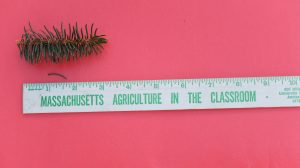 The genus Picea comprises 35 species of evergreen conifers throughout Northern temperate and boreal regions. Engelmann Spruce, Picea engelmannii, in morphology and appearance has similarities to Norway Spruce which is more widely grown at Mount Auburn. Found at higher elevations of the Rocky Mountains and Cascade Mountains, to southern parts of Arizona and New Mexico, Engelmann Spruce has 1-inch-long, blue-green, flexible, evergreen needles, which are pungent when broken. As with many conifers it produces separate male and female flowers. When successfully fertilized, female flowers will mature as 2 ½-inch-long chestnut brown cones.
The genus Picea comprises 35 species of evergreen conifers throughout Northern temperate and boreal regions. Engelmann Spruce, Picea engelmannii, in morphology and appearance has similarities to Norway Spruce which is more widely grown at Mount Auburn. Found at higher elevations of the Rocky Mountains and Cascade Mountains, to southern parts of Arizona and New Mexico, Engelmann Spruce has 1-inch-long, blue-green, flexible, evergreen needles, which are pungent when broken. As with many conifers it produces separate male and female flowers. When successfully fertilized, female flowers will mature as 2 ½-inch-long chestnut brown cones.
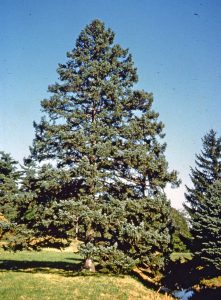 We turn to Douglas Peattie’s lyrical writing in A Natural History of Western Trees to imagine these trees in their natural setting, “The most dramatic tree of your first trip in the Rockies will almost certainly be the Engelmann Spruce…you would not recall it as distinct from other trees had it not an inherent personality of its own. Fifty and 100 feet and more tall, it is, in dense forests, slender as a church spire, and its numbers are legion. So it comes crowding down to the edge of the meadow where your tent is pitched, to the rocks surrounding the little lake that mirrors its lance-like forms upside down. And when the late mountain light begins to leave the summer sky, there is something spirit-like about the enveloping hosts of the Engelmanns.”
We turn to Douglas Peattie’s lyrical writing in A Natural History of Western Trees to imagine these trees in their natural setting, “The most dramatic tree of your first trip in the Rockies will almost certainly be the Engelmann Spruce…you would not recall it as distinct from other trees had it not an inherent personality of its own. Fifty and 100 feet and more tall, it is, in dense forests, slender as a church spire, and its numbers are legion. So it comes crowding down to the edge of the meadow where your tent is pitched, to the rocks surrounding the little lake that mirrors its lance-like forms upside down. And when the late mountain light begins to leave the summer sky, there is something spirit-like about the enveloping hosts of the Engelmanns.”
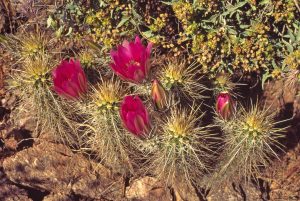 In addition to Engelmann Spruce, he also has been remembered with Engelmann oak (Quercus engelmannii), Hedgehog cactus (Echinocereus engelmannii), Engelmann’s prickley-pear (Opuntia engelmannii), and Apachie Pine (Pinus engelmannii).
In addition to Engelmann Spruce, he also has been remembered with Engelmann oak (Quercus engelmannii), Hedgehog cactus (Echinocereus engelmannii), Engelmann’s prickley-pear (Opuntia engelmannii), and Apachie Pine (Pinus engelmannii).
Look for our two young Engelmann Spruce between Birch Avenue and the Coolidge Avenue fence. While not yet of the stature that Peattie describes, they are part of our ongoing commitment to diversify our conifer collection, adding to our whole landscape of exceptional beauty.
…The spruces rough in the distant glitter
of the January sun; and not to think
of any misery in the sound of the wind…
-Wallace Stevens
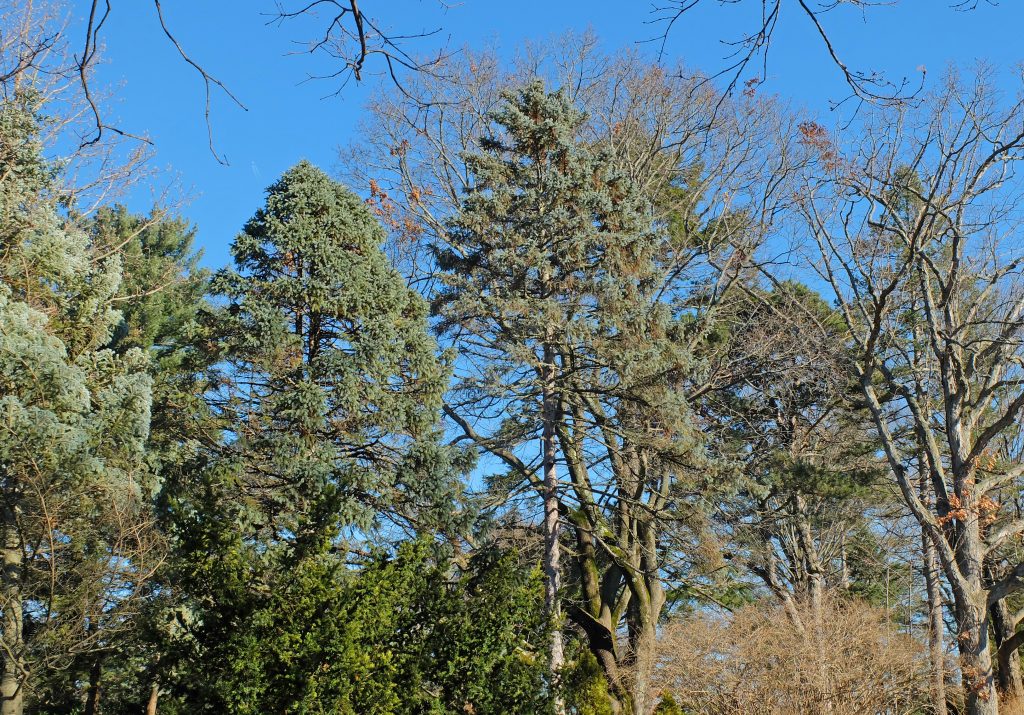
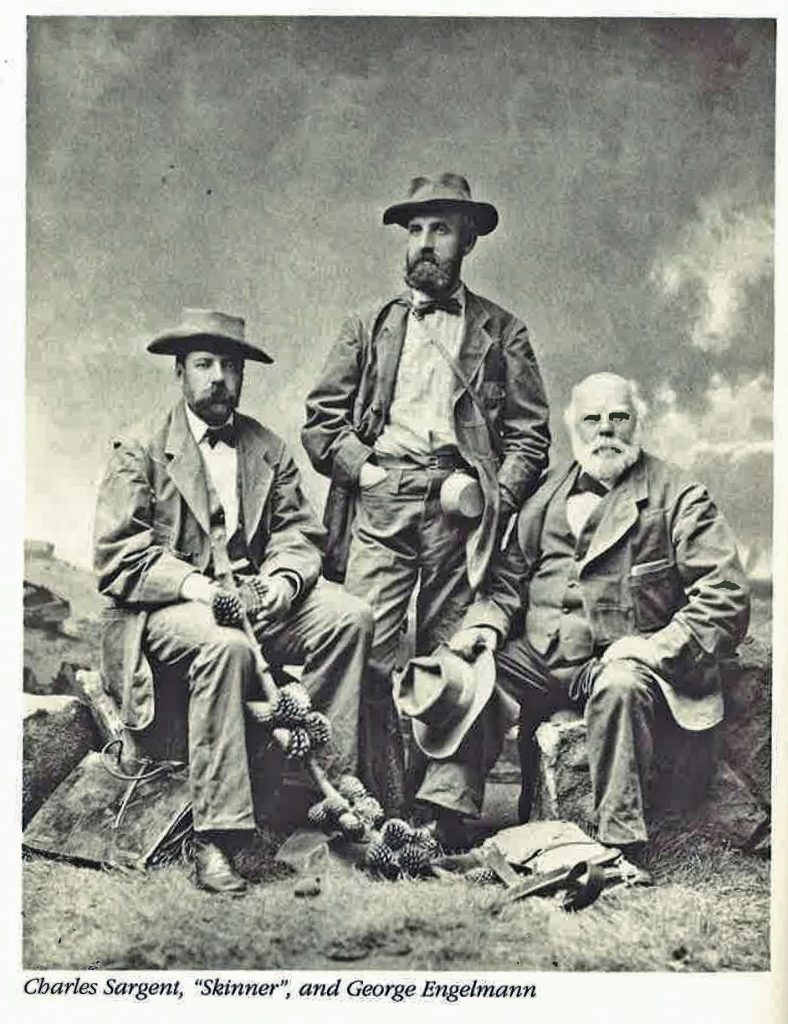
Leave a Reply